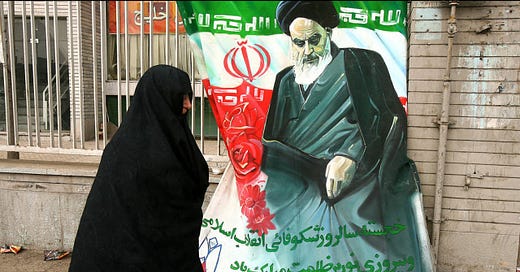The Back Room
The Islamist regime of the Islamic Republic of Iran, dominated by a cadre of mullahs, represents a theocratic imposition that is neither indigenous to the Persian cultural milieu nor reflective of the historical identity of Iran’s native populace. The mullahs’ authority, rooted in a rigid interpretation of Shia Islam, is a product of ideological and historical dislocations that obscure the distinct ethnocultural heritage of the Persian people and their divergence from Arab identity. The non-indigenous character of the mullahs’ rule delineates the ethnic, linguistic, and cultural distinctions between Persians and Arabs, emphasizing the violent imposition of Islam as a foreign influence on Iran’s indigenous population.
The mullahs’ claim to legitimacy in Iran rests on a theological framework alien to the pre-Islamic Persian civilization, which was characterized by Zoroastrianism and a rich tapestry of indigenous traditions. The Islamic conquest of Persia in the 7th century, led by Arab armies under the Rashidun Caliphate, was a violent rupture that dismantled the Sasanian Empire and suppressed native religious and cultural practices. This conquest, marked by battles such as al-Qadisiyyah (636 CE), imposed Islam through coercion, including forced conversions, punitive taxation (jizya), and cultural erasure.
The mullahs, as inheritors of this imposed Islamic orthodoxy, perpetuate a governance model that prioritizes a universalist Islamic identity over Persia’s indigenous heritage, thus alienating the Persian people from their historical roots. Their rule is not a natural outgrowth of Persian culture but a continuation of a foreign ideological hegemony initiated by Arab conquest.
Persians and Arabs are distinct in their ethnic, linguistic, and cultural profiles. Persians, an Indo-Iranian people, trace their lineage to the ancient Aryan tribes that settled the Iranian plateau millennia ago. Their language, Farsi, is an Indo-European tongue, replete with influences from Old Persian and Avestan, and written in a modified Arabic script only after the Islamic conquest. Arabs, by contrast, are a Semitic people, primarily associated with the Arabian Peninsula, whose language, Arabic, belongs to the Afro-Asiatic family.
While Persians developed a sophisticated literary and artistic tradition under empires like the Achaemenids and Sasanians, Arab culture, prior to Islam, was predominantly tribal and oral. The conflation of Persian and Arab identities under the mullahs’ Islamist ideology obscures these distinctions, subordinating Persian uniqueness to a homogenized Islamic narrative.
The mullahs’ governance, with its emphasis on Shia theocracy, further alienates Iran’s indigenous identity by enforcing a puritanical Islam that clashes with the pluralistic and syncretic tendencies of Persian culture. Historically, Persians adapted Islam to their own traditions, as seen in the flourishing of Persian poetry and philosophy during the Islamic Golden Age. However, the mullahs’ rigid orthodoxy stifles this cultural dynamism, imposing a foreign-inspired dogmatism that echoes the initial violence of the Arab conquest. Their rule, far from representing Iran’s indigenous people, perpetuates a legacy of cultural and ideological subjugation, distancing the Persian nation from its ancestral heritage and distinct identity.



